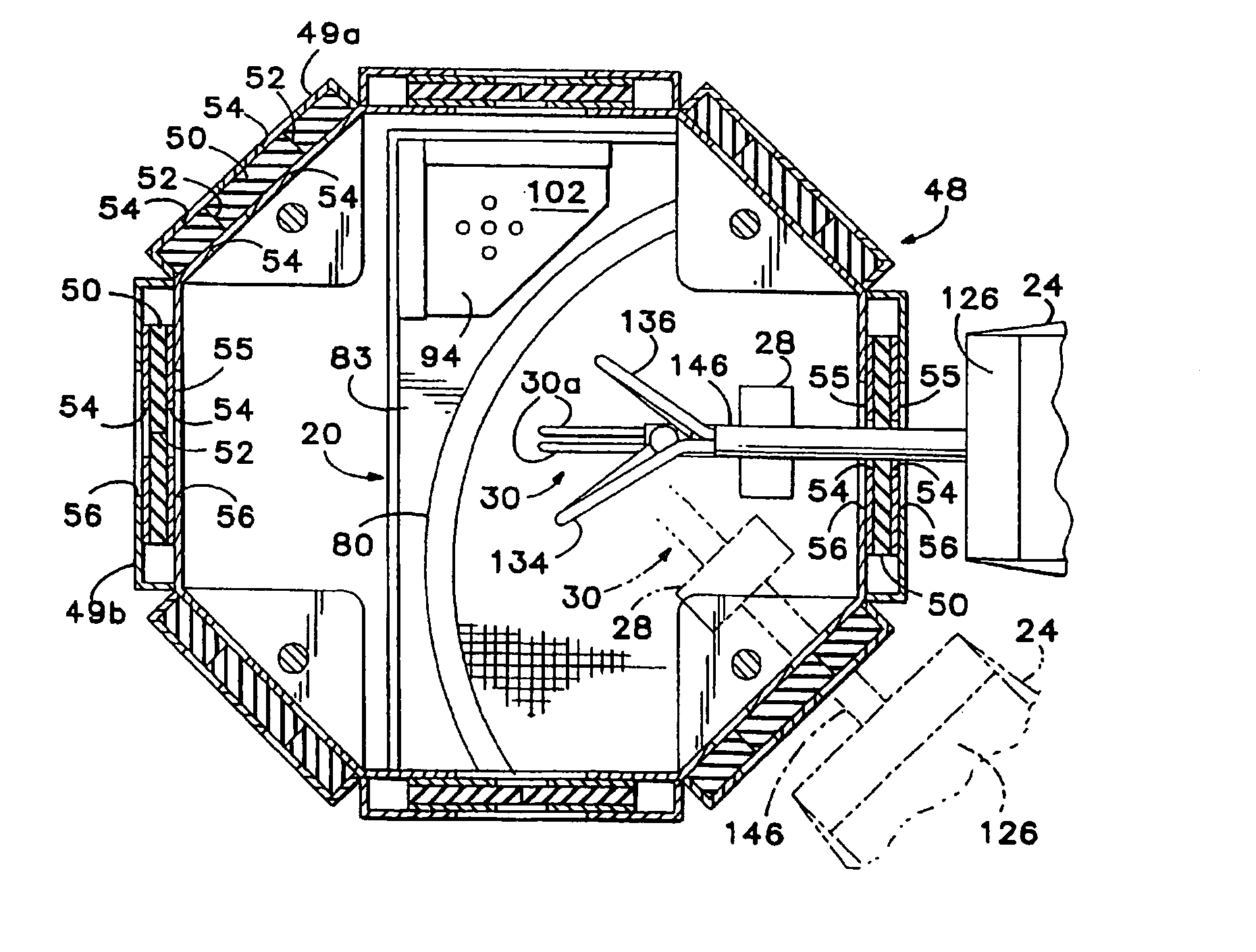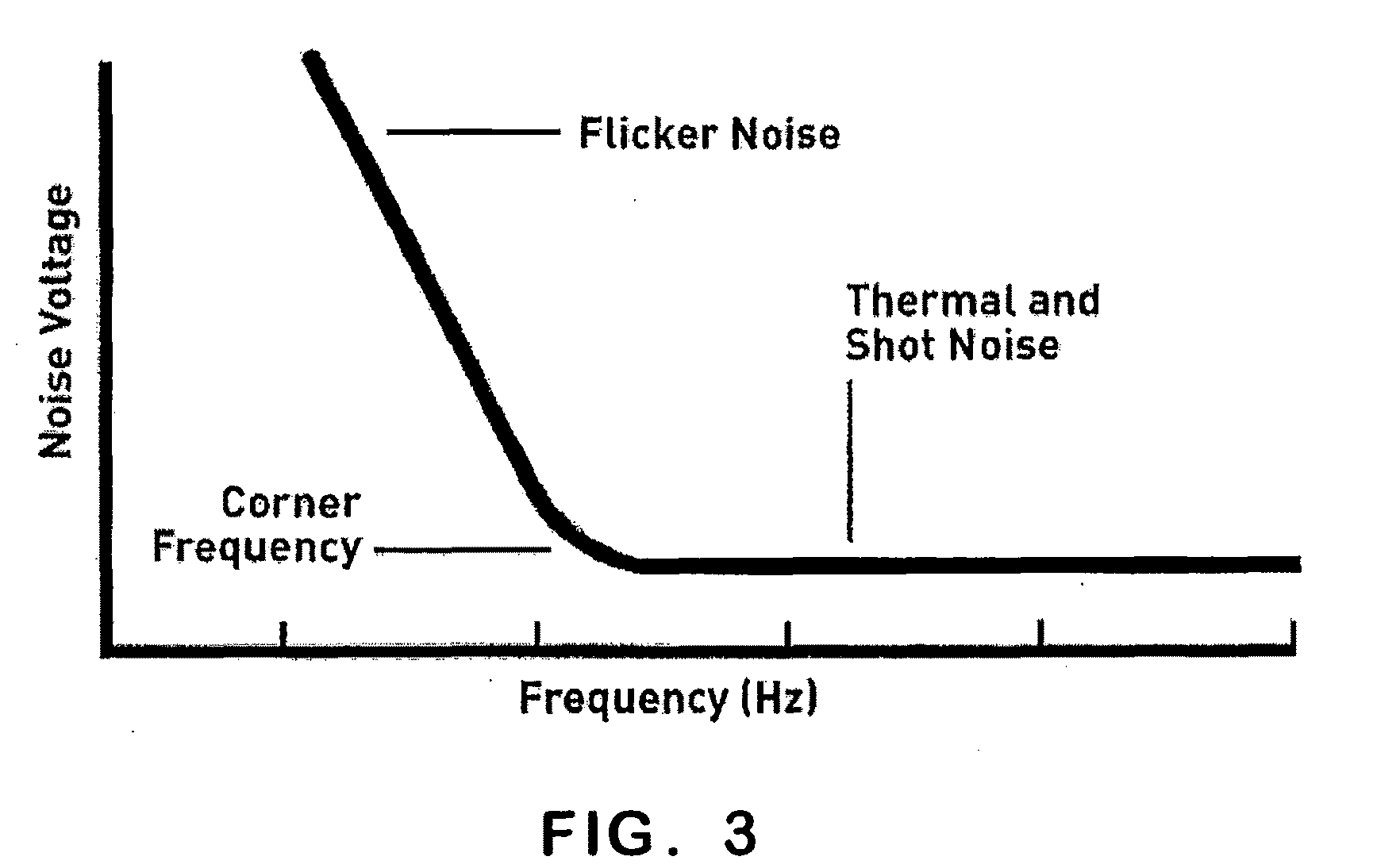Test system for flicker noise
a test system and flicker noise technology, applied in the direction of noise figure or signal-to-noise ratio measurement, measurement device, instruments, etc., can solve the problem of shooting noise, the noise level of the device itself or a combination of devices, and the signal-to-noise ratio decreas
- Summary
- Abstract
- Description
- Claims
- Application Information
AI Technical Summary
Benefits of technology
Problems solved by technology
Method used
Image
Examples
Embodiment Construction
[0037]Flicker noise increases as the size of a device decreases and an increase in flicker noise increases the flicker noise bandwidth, the measurement range required to fully characterize the flicker noise. Characterizing the flicker noise of smaller devices requires measurement system components with a good frequency response, elimination or control of electrical noise that might affect the system and accurate DC measurements for the device under test.
[0038]Integrated circuits (ICs) include micro-circuits chemically etched on and into semiconductor material or wafers. It is customary to manufacture several ICs on a single wafer and then separate the individual circuits after performance and functional testing in a wafer probe station. The test points on ICs are customarily laid out along rectangular grid coordinates and may be tested with multiple probes on a probe card or by single probes in a north-south-east-west arrangement. Likewise, ICs in a composite device are typically ar...
PUM
 Login to View More
Login to View More Abstract
Description
Claims
Application Information
 Login to View More
Login to View More - R&D
- Intellectual Property
- Life Sciences
- Materials
- Tech Scout
- Unparalleled Data Quality
- Higher Quality Content
- 60% Fewer Hallucinations
Browse by: Latest US Patents, China's latest patents, Technical Efficacy Thesaurus, Application Domain, Technology Topic, Popular Technical Reports.
© 2025 PatSnap. All rights reserved.Legal|Privacy policy|Modern Slavery Act Transparency Statement|Sitemap|About US| Contact US: help@patsnap.com



